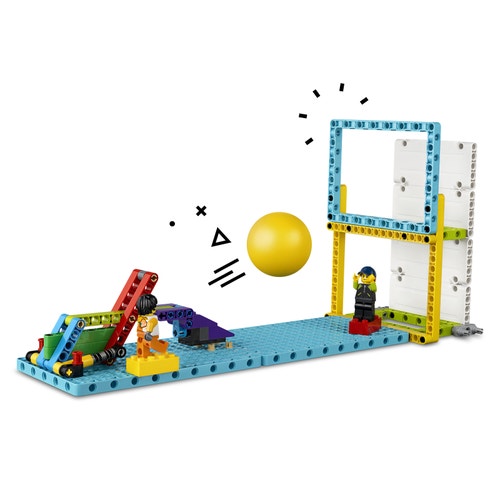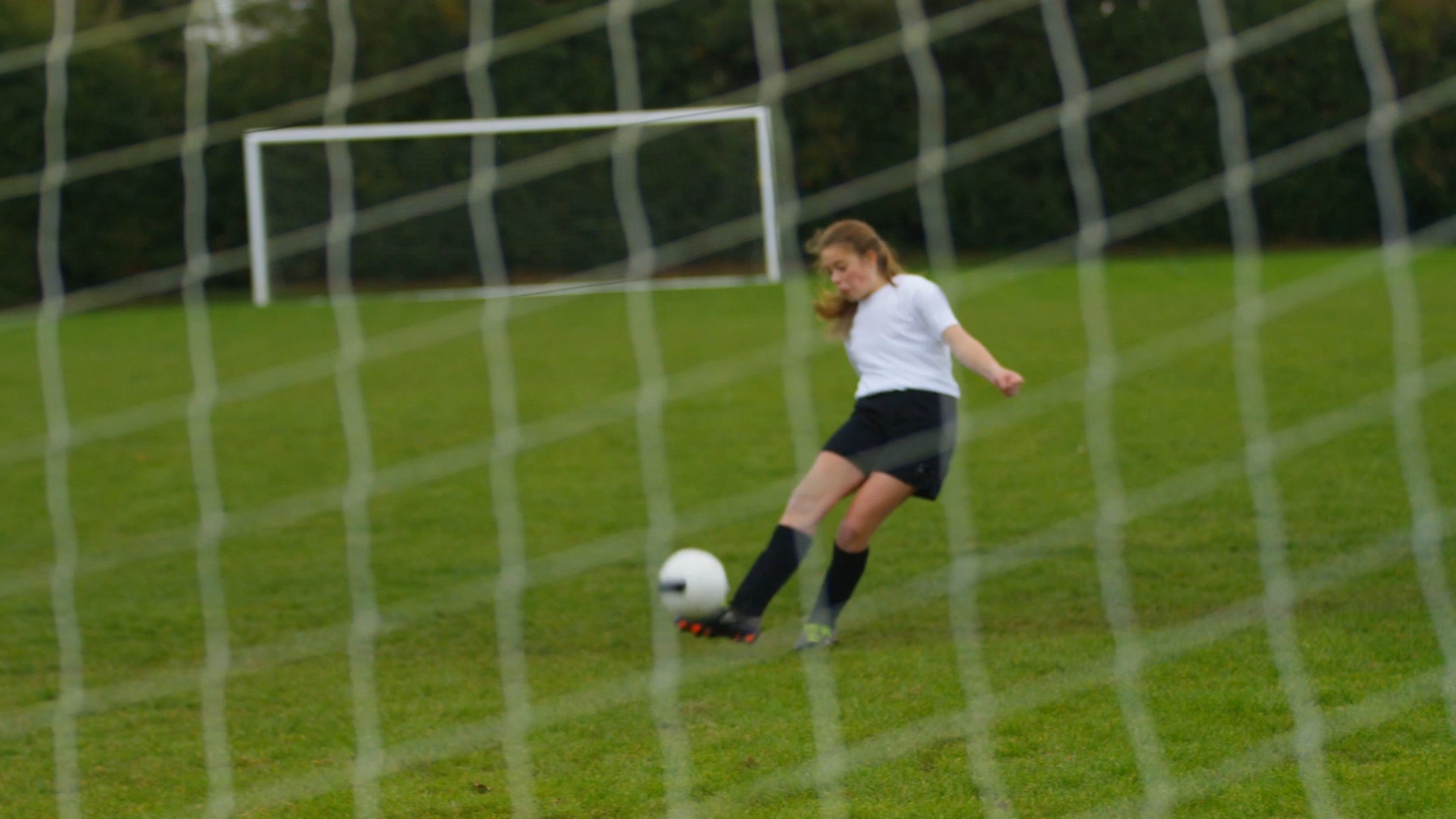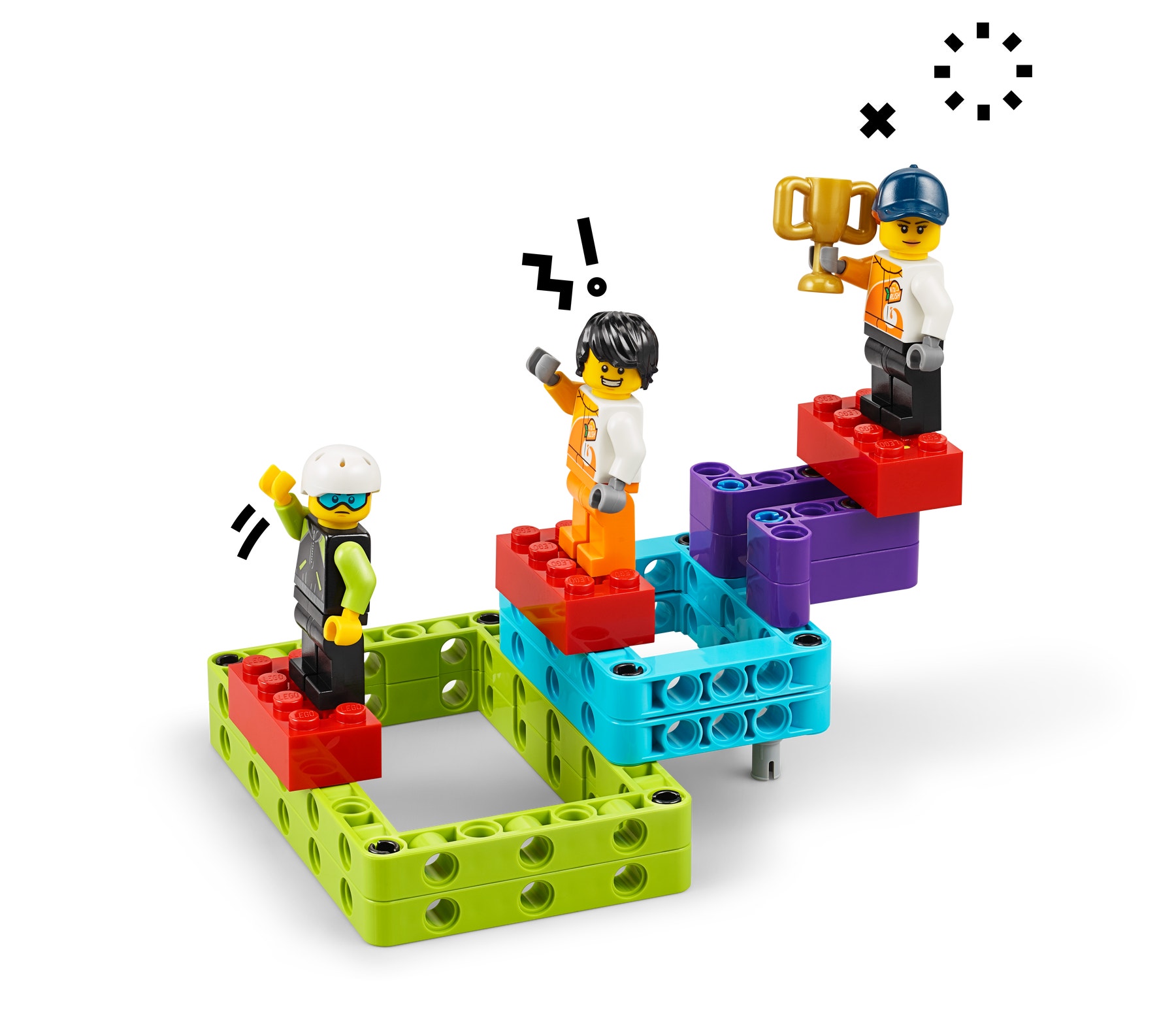Free Kick
The referee blows the whistle... Foul! The player gets a free kick. What does it take to be able to score every time?

Prepare
- Review the online student material. Use a projector to share this material with your students during the lesson.
- Make sure that you've covered Newton's three laws of motion in an earlier lesson.
- Consider the abilities and backgrounds of all of your students. Differentiate the lesson to make it accessible to everyone. See the Differentiation section below for suggestions.
Engage
(Whole Class, 5 Minutes)
- Watch the student video here, or access it via the online student material.

- Facilitate a quick discussion about the forces that help a soccer player score a goal.
- Ask questions, like:
- What happens when a soccer player kicks a ball? (Their kicking leg puts kinetic energy [i.e., movement] into the ball. The mass [i.e., weight] of the player's leg and the velocity ([i.e., speed] at which they kick determine how far the ball will move.)
- What enables soccer players to kick the ball in different directions? (The angle of the soccer player's foot as it hits the ball determines in which direction it'll go.)
- What makes the ball stop? (Friction from air resistance and from the surface the ball is rolling on, like the grass, will stop the ball.)
- Tell the students that they'll be building a mechanical kicking foot, goalie, and goal post.
- Distribute a set to each group.
Explore
(Small Groups, 30 Minutes)
- Ask the students to work in pairs to build the Free Kick model. Tell them to take turns, one partner searching for the bricks while the other builds, switching roles after each step has been done.
- You can find support for building in the Tips section below.
- This model should only take 15 – 20 minutes to build. Once they've finished building, have the students give their models a try.
- Tell the students that now they'll perform the 3 experiments found in the student material.
Experiment 1:
- Ask the students to pull back the lever on their models, placing the ball on the penalty spot, and then releasing the lever.
- The ball should go straight into the bottom goal.
Experiment 2:
- Tell the students to swap out the red shoe for the yellow one.
- Ask them to predict the angle at which the ball will travel when the lever is pulled back and let go. Have them record their predictions on their Student Worksheets. (Teacher Support – Additional Resources).
Experiment 3:
- Now, ask them to swap the yellow shoe for the purple one.
- Again, have the students predict and record the angle at which the ball will travel when the lever is pulled back and let go.
Explain
(Whole Class, 5 Minutes)
- Gather your students together to share what they've observed in their groups.
- Ask questions, like:
- Why did the horizontal kicking mechanism shoot the ball upward when you replaced the red shoe with the yellow and purple shoes? (These shoes have an inclined plane. When they collide with the ball, the force [i.e., the abnormal normal force] is always directed perpendicular [i.e., at a right angle] to the surface.)
- What's the force called when the ball comes off the player's foot after it's kicked? (This force is called a "force vector." It describes the amount of force that's applied in a specific direction.)
Elaborate
(Whole Class, 5 Minutes)
- If time allows, have your students explore how to beat the goalie. One student can set up the goalie while the other selects the best shoe for scoring a goal. Allow the ball to score even if it shoots into the top of the goal.
- Allow time for the students to disassemble their models, sort the bricks back into the trays, and clean up their workstations.
Evaluate
(Ongoing Throughout the Lesson)
- Give feedback on each student's performance.
- Facilitate self-assessment.
- Use the assessment rubrics provided to simplify the process.
Observation Checklist
- Measure your students’ proficiency in describing how the forces acting on an object in a specific direction can change its motion.
- Create a scale that matches your needs. For example:
- Needs additional support
- Can work independently
- Can teach others
Self-Assessment
- Have each student choose the brick that they feel best represents their performance:
- Green: With some help, I can describe how forces acting on an object can change its direction of motion.
- Blue: I know I can describe how forces acting on an object can change its direction of motion.
- Purple: I can describe and explain how forces acting on an object can change its direction of motion.
Peer-Feedback
- Encourage your students to assess their peers by:
- Using the brick scale above to score each other's performance
- Presenting their ideas and giving constructive feedback

Tips
Model Tips
- Remind the students to count the holes in the beams and plates to help them place the bricks correctly.
- If, after 20 minutes, they've only built the kicker and shoes, have them continue with the experiment, using their hands as a goal.
Differentiation
Simplify this lesson by:
- Encouraging your students to start by exploring just the red and purple football shoes
Increase the difficulty by:
- Having the students reposition or redesign the shape of the shoe to score sideways past the goalie (i.e., to the left or right if the goalie is placed in the center of the goal.)
Extensions
(Note: This will require additional time.)
To incorporate math skills development, ask your students to measure how high the ball goes and how far it travels with the purple and yellow shoes, and then calculate the ratio of height to distance traveled (e.g., if the ball goes 4 inches high and travels 18 inches in [horizontal] distance, then 4/18 = a ratio of 2:9).
CCSS.MATH.CONTENT.6.RP.A.1
1:1 Hybrid Learning
Download the Personal Learning Kit lesson plan from the hybrid learning resources.
Teacher Support
Students will:
- Explore how force vectors and the resulting motion of two colliding objects help a soccer player shoot a ball high or low to score a goal
- Explore how the shape of an inclined plane/wedge can change the direction of a ball
- LEGO® Education BricQ Motion Prime Set (one for every two students)
- NGSS MS-PS2-1
- ISTE: 4c, 6c, 7c
- CCSS.ELA-LITERACY.SL6.4
Lesson extension
- CCSS.MATH.CONTENT.6.RP.A.1